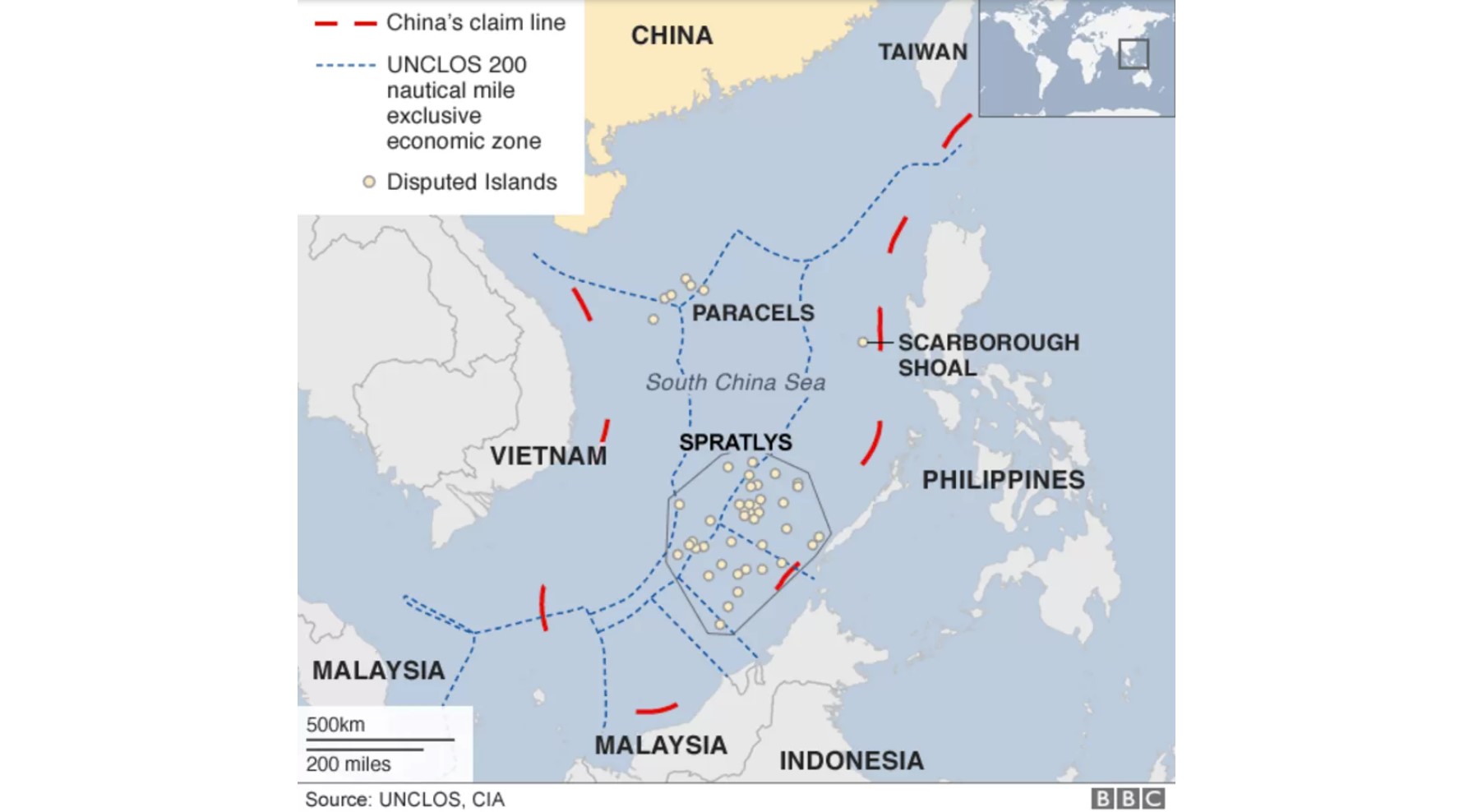China and the South China Sea

Bottom Line: A China coastguard vessel blocked two Philippines government vessels over the weekend in the Second Thomas shoal area near the Philippines, which has raised questions over whether the South China Sea will be another geopolitical flashpoint. We would say not in 2024, both given China’s focus on increasing exports currently and given President Biden strong support for allies such as the Philippines. However, if Donald Trump is elected U.S. president then he could be a trade hawk to China, but softer than Biden on military support for Asian countries.
Figure 1: South China Sea

Source: BBC
A China coastguard vessel blocked two Philippines government vessels over the weekend in the Second Thomas shoal area near the Philippines. This is being read as a response from China to last week tripartite meeting between the U.S./Japan and Philippines in Washington. China has had such incidents in the past in Philippines waters (last October here) and also in waters belonging to Malaysia, Taiwan and Vietnam. China desire is a buffer zone around China for security reasons, but also for potential natural resources. The close relationship between the Philippines and the U.S. means that the U.S. military could be drawn in if the dispute becomes direct between China and Philippines navies. The U.S. policy to the Philippines is one of strong support rather than the U.S. strategic ambiguity that exists towards a China attack on Taiwan.
While the South China Sea is a potential flashpoint, China main focus at the moment is to get global companies to keep investing in China. The German Chancellor visit to China saw a readout that saw encouragement for China-EU trade relations from president Xi and the benefit of renewables enabling exports, while a recent visit by global multinationals also saw a charm offensive from China. China article IV with the IMF showed concerns about export prospects from China authorities, especially as global supply chains continue to reduce dependence on China post COVID, post Ukraine and due to fears over a war between China and Taiwan.
On the Taiwan front, the election of Han Kuo-yu as the newly elected legislative speaker from Taiwan's largest opposition party, the Kuomintang, actually reduces tensions. Han Kuo-yu is known to be China friendly and has pushed for visits to mainland China. This would help China unification aims without having to move towards the high risk option of a naval invasion. Combined with the prospect that China navy will not be strong enough until the early 2030’s, the probability on invasion is low (here). This does not slow global multinationals from diversifying supply chains away from China, as China will likely maintain the reunification rhetoric towards Taiwan.
The question is whether the military lull towards Taiwan sees China pivoting towards its claims in the South China Sea. We would say not in 2024, both given China’s focus on increasing exports currently and given President Biden strong support for allies such as the Philippines. However, the situation could change in 2025 if Donald Trump is elected U.S. president. Though Trump is a trade hawk towards China, in 2016-17 he questions the strategic ambiguity support for Taiwan. This is a geopolitical hotspot that needs to be watched in the medium-term.